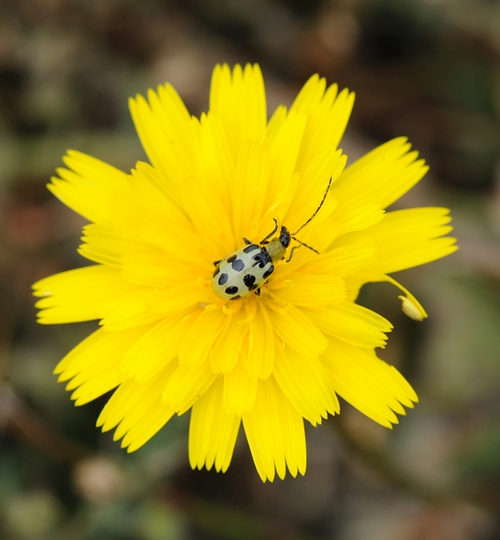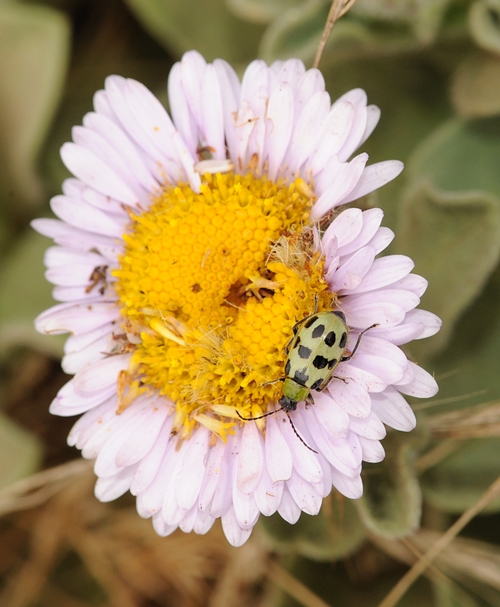Aug 18, 2010
Gardeners pinch them. Photographers shoot them. Hikers wonder what they are.
The spotted cucumber beetle (Diabrotica) is a major agricultural pest. You'll see it on cucumbers, squash, corn, beans, watermelons, musk melons, cotton, tomatoes and other crops. You'll see it on ornamentals, too, including roses, dahlias, agapanthus and zinnias.
In its larval form, it's known as the southern corn rootworm. The larvae feed on roots and stems, and the adults, on foliage, pollen and flowers. The adults burrow into the corn ear tips and chew on the corn silks.
At first glance, the spotted cucumber beetle, about one-fourth inch long, resembles a ladybug or lady beetle that's changed its colors. Instead of reddish beetle with large black spots, however, these beetles are yellowish-green with large black spots.
When hiking last week in the cliffs above Timber Cove, Sonoma County, we spotted scores of spotted cucumber beetles. They were foraging on dandelions, seaside daisies and the California state flower, the golden poppy.
Seemed like every other flower harbored a spotted cucumber beetle. Or two.
Its predators, including tachnid flies, soldier beetles, lacewings and ladybugs, were no where in sight.
The spotted cucumber beetle (Diabrotica) is a major agricultural pest. You'll see it on cucumbers, squash, corn, beans, watermelons, musk melons, cotton, tomatoes and other crops. You'll see it on ornamentals, too, including roses, dahlias, agapanthus and zinnias.
In its larval form, it's known as the southern corn rootworm. The larvae feed on roots and stems, and the adults, on foliage, pollen and flowers. The adults burrow into the corn ear tips and chew on the corn silks.
At first glance, the spotted cucumber beetle, about one-fourth inch long, resembles a ladybug or lady beetle that's changed its colors. Instead of reddish beetle with large black spots, however, these beetles are yellowish-green with large black spots.
When hiking last week in the cliffs above Timber Cove, Sonoma County, we spotted scores of spotted cucumber beetles. They were foraging on dandelions, seaside daisies and the California state flower, the golden poppy.
Seemed like every other flower harbored a spotted cucumber beetle. Or two.
Its predators, including tachnid flies, soldier beetles, lacewings and ladybugs, were no where in sight.
Topics:
Attached Images:

Spotted Cucumber Beetle

Two on a Poppy

Seaside Daisy